#south sudan
Text

“A Sudanese girl holds a sign as supporters of Sudan People's Liberation Army leader John Garang wait for his arrival on the tarmac of the Rumbek, south Sudan, airport.”
Photographed by Beatrice Debut.
10 June 2004.
4K notes
·
View notes
Text
I think people need to realize that it was sheer luck that they have been born in developed countries with decent living conditions, away from the threat of war or civil conflicts. It is by pure coincidence at times that you end up being a citizen of a developed country, rather than one with an impoverished population experiencing man-made (because it is man-made in this day and age) famine, diseases that have been long eradicated or war (be it a civil conflict or due to selfish interests of developed nations who profit from these, at the cost of civilian lives). You could have been born into these conditions.
The point is: NO ONE should ever be made to witness the horrors of war, famine, poverty, disease or any other trauma inducing situation in which they have no free will or say about its outcome.
#human rights#free palestine#global south#global north#development#international politics#International relations#north korea#china#myanmar#thailand#burkina faso#free sudan#south sudan#idk what else to add here#israel palestine conflict#israel apartheid#iran#yemen#syria#ira1#afghanistan#i stand with palestine#UN#us#uk#humanitarian crisis
1K notes
·
View notes
Text



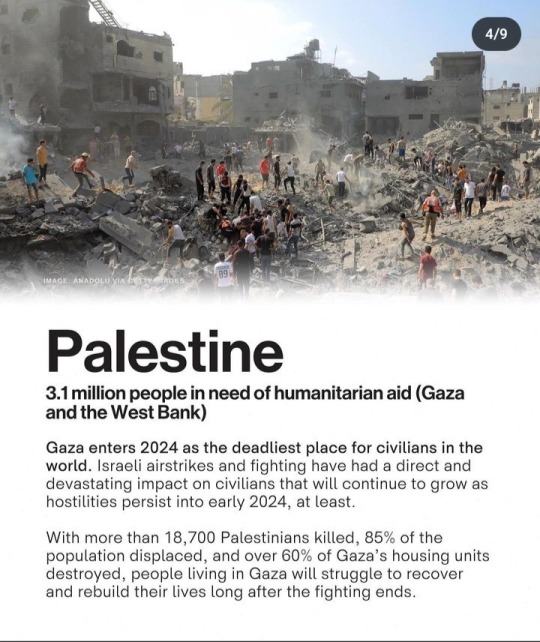



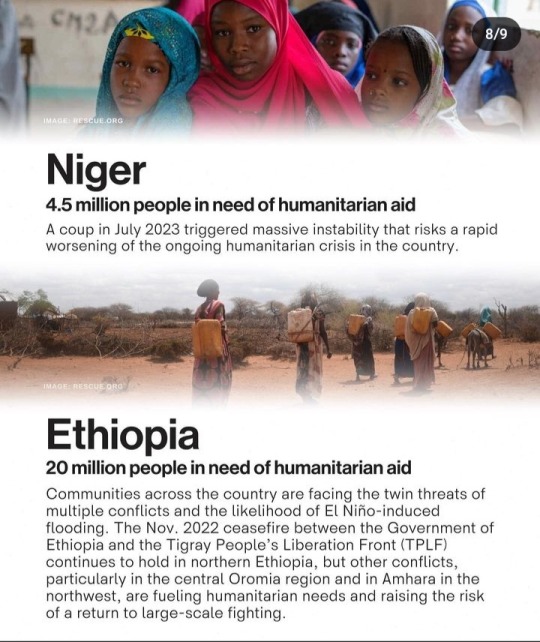
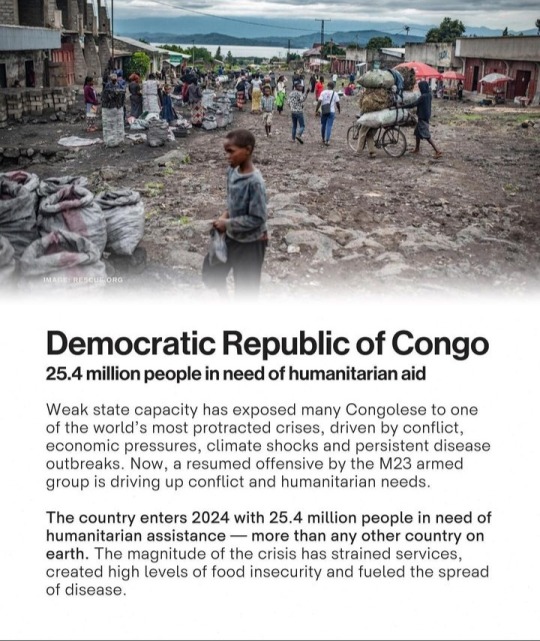
#palestine#free palestine#gaza#free gaza#south sudan#eyes on sudan#keep eyes on sudan#sudan#sudanese genocide#myanmar#eyes on myanmar#talk about sudan#burkina faso#mali#somalia#niger#ethiopia#democratic republic of the congo#congo#congo is bleeding#what's happening in sudan#what's happening in congo#important#current events#eyes on congo#social justice#u.s#israel
629 notes
·
View notes
Text

Laarim woman, South Sudan, by Anibal Bueno
#laarim#south sudan#africa#folk clothing#traditional clothing#traditional fashion#cultural clothing#eastern africa
742 notes
·
View notes
Text
the 10 crises the world must not look away from:
1. SUDAN
24.8 million people in need of humanitarian aid. a still-escalating war brings sudan to the top of the watchlist. fighting has more than doubled humanitarian needs in less than a year and displaced 6.6 million people- bringing the country to the brink of collapse. more people are internally displaced within sudan than in any other country on earth. in darfur, human rights groups have reported mass killings and forced displacement along ethnic lines.
2. PALESTINE
3.1 million people in need of humanitarian aid (gaza and the west bank). gaza enters 2024 as the deadliest place for civilians in the world. i*****i airstrikes and fighting have had a direct and devastating impact on civilians that will continue to grow as hostilities persist into early 2024, at least. with more than 18,700 palestinians killed, 85% of the population displaced, and over 60% of gaza's housing units destroyed, people living in gaza will struggle to recover and rebuild their lives long after the fighting ends.
3. SOUTH SUDAN
9 million people in need of humanitarian aid. the war across the border in sudan threatens to undermine south sudan's fragile economy and could add to political tensions in the run-up to the country's first-ever elections. meanwhile, an economic crisis and increased flooding have impacted families' ability to put food on the table. a predicted fifth year of flooding could also damage livelihoods and drive displacement.
4. BURKINA FASO
6.3 million people in need of humanitarian aid. as the burkinabè military struggles to contain armed groups, violence is rapidly growing and spreading across the country. roughly 50% of the country is now outside government control.
5. MYANMAR
18.6 million people in need of humanitarian aid. the conflict in myanmar has spread significantly since the military retook political power in 2021. 18.6 million people in myanmar are now in need of humanitarian assistance - nearly 19 times more than before the military takeover. myanmar has seen decades of conflict, but in oct. 2023, three major armed groups resumed clashes with the government. over 335,000 people have been newly displaced since the latest escalation began.
7. MALI
6.2 million people in need of humanitarian aid. dual security and economic crises are driving up civilian harm and humanitarian needs. conflict between the military government and armed groups will likely escalate.
8. SOMALIA
6.9 million people in need of humanitarian aid. somalia faces heightened conflict and climate risks after a record drought. more recently, widespread flooding has displaced more than 700,000 people and will likely continue into early 2024.
9. NIGER
4.5 million people in need of humanitarian aid. a coup in july 2023 triggered massive instability that risks a rapid worsening of the ongoing humanitarian crisis in the country.
10. ETHIOPIA
20 million people in need of humanitarian aid. communities across the country are facing the twin threats of multiple conflicts and the likelihood of el niño-induced flooding. the nov. 2022 ceasefire between the government of ethiopia and the tigray people's liberation front (TPLF) continues to hold in northern ethiopia, but other conflicts, particularly in the central oromia region and in amhara in the northwest, are fueling humanitarian needs and raising the risk of a return to large-scale fighting.
11. DEMOCRATIC REPUBLIC OF CONGO
25.4 million people in need of humanitarian aid. weak state capacity has exposed many congolese to one of the world's most protracted crises, driven by conflict, economic pressures, climate shocks and persistent disease outbreaks. now, a resumed offensive by the M23 armed group is driving up conflict and humanitarian needs. the country enters 2024 with 25.4 million people in need of humanitarian assistance - more than any other country on earth. the magnitude of the crisis has strained services, created high levels of food insecurity and fueled the spread of disease.
— via my.linda__ on instagram
435 notes
·
View notes
Text
There is a long long conversation that I want to participate in and highlight about race and the Palestinian liberation struggle because 4 things are true:
1. Hypervisibility is not a privilege of the exploited. It's a harrowing experience to be observed perpetually by a global audience as you resist your own murder. Black people globally are very familiar with this experience. The Palestinian people are both hypervisible and dehumanized to such an extent that their national cause has been used rhetorically by many who are willing to watch and cry and throw pennies but not provide actual support for their safety, which feels very familiar to Black people.
2. Nonblack people globally on average do not recognize Black suffering as human suffering because Black life isn't recognized as human life by the averqge nonblack person. If that feels accusatory, it is. Think before responding to that, ask yourself some questions before you ask me a half baked one because by ethnicity, nationality, status in the eyes of civil society and so on, all nonblack people benefit from the dehumanizing of Black people.
3. Palestinians have used their hypervisibility for the benefit of the struggles of others even at their own expense, even at the risk of their lives, Palestinians have been insistent, for years, that their struggle is connected to the suffering of the whole world and they've been extremely correct.
4. Antiblackness is and always will be a factor in how nonblack people are treated collectively by the media gaze and how that manifests is actually significantly more complicated than "nonblack = positive, Black = negative " because proximity to and empathy for Black liberation is a factor in the treatment of nonblack groups, and when you put yourself out there on your own behalf and the behalf of Black people, your humanity becomes conditional to empire. Empathy for Black struggle, let alone solidarity with Black struggles for liberation, makes targets.
#antiblackness#hypervisibility#Necropolitics#ontology#black liberation#Palestine#the DRC#sudan#south sudan
469 notes
·
View notes
Text

Train to Wau, South Sudan, 1979 © Graham Bland
191 notes
·
View notes
Text
this world wasn’t made for children — any of us, whether we be palestinian, queer, autistic, or whatever.
tw for death, transphobia, zionism, racism, genocide, and a heavy vent about them all
i’m sitting in my room and i feel so…empty? heartbroken? distraught? i don’t know the right word to describe how i feel after hearing about nex benedict.
nex was a 16 y/o member of the diné/cherokee (i’m so sorry if that isn’t the right term, no ill-intent whatsoever) nation in oklahoma.
they were murdered by three girls in their high school class in a bathroom on february 7th, just this year.
i won’t talk about the system that failed them — that is failing so many others like them, myself included — because i genuinely don’t know what more to say. my heart aches for them and the knowledge that, regardless of them being non-binary, they were a child. nex benedict was younger than me, and should’ve lived a long, happy life. instead, they’re fucking DEAD.
as i sit at my desk, complaining to my own friends my woes and worries, i can feel my heart ripping itself in half. nex benedict deserved just as happy and prosperous of a life as the rest of us. i think about how that could’ve been my own queer friends in my own far-right state, hell, it could’ve been me, and it would hurt all the same. as another non-binary person myself i cry for the life that was stolen from a fucking CHILD. nex benedict was younger than me, and it’s haunting to think about.
i feel the same about the thousands of children being fucking carpet bombed in gaza and lebanon. again, i won’t go into detail about the system of zionist apartheid that is causing so. many. children just like me to toe the line between life and death. i feel the same about the babies starving to death in south sudan, the uyghur women that won’t be able to have children because they’ve been sterilized against their will, the queer tweens in conservative, red-leaning states that have to fight to live in peace.
what is this world, if not made for children? when black kids are shot because fucking pigs see them as threats instead of CHILDREN? when muslim girls are beaten up for wearing hijabs because ignorant bigots fail to see the internal struggle that comes with it, and see nothing but fascist, conservative propaganda? when autistic kids are abused and punished for not being able to conform neurotypical conventions that they physically can’t uphold?
when will this world start giving a fuck about kids like us? kids like hind rajab (6), nex benedict (16), and ahmed mansara?
wake the fuck UP.
#genocide#palestine#gaza#non-binary#nex benedict#sudan#south sudan#xinjiang#ahmed mansara#hind rajab#it’s taking every bone in my body for me to not break down and start sobbing my eyes out
147 notes
·
View notes
Text
model, Adit Priscilla is so gorgeous!


#2022#black tumblr#beauty#black beauty#black girls#beauty archive#fashion#black fashion#beauty & fashion#fashion archive#october 2022#adit priscilla#south sudan#model archive#black model#once a top post
2K notes
·
View notes
Text

There is no flag large enough to cover the shame of killing innocent people.
-- Howard Zinn
207 notes
·
View notes
Text
#sudan crisis#sudan conflict#save sudan#sudan genocide#free sudan#freesudan#genocide#current events#important#sudan#south sudan#north africa#africa#Egypt
124 notes
·
View notes
Text

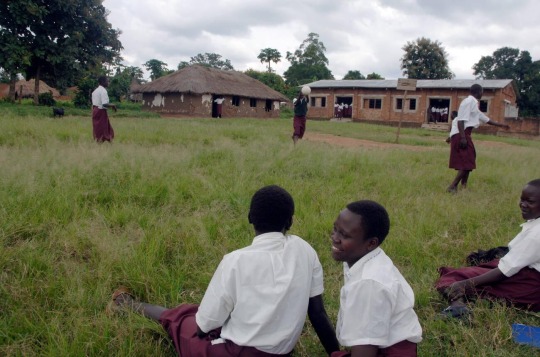
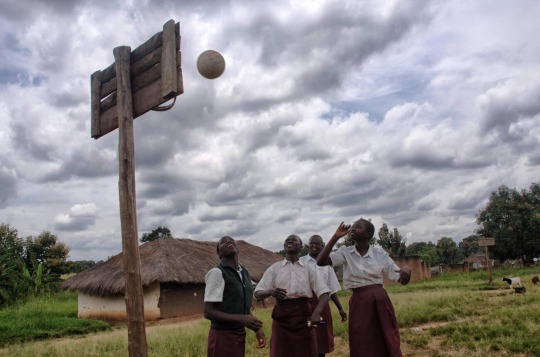

“Teenage girls playing basketball at a school in Yei, South Sudan.”
Photographed by Mark Pearson, 2005.
2K notes
·
View notes
Text
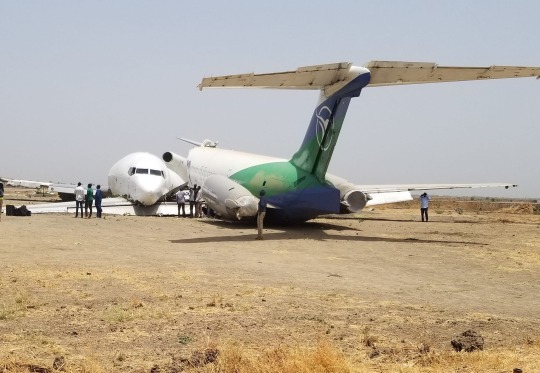



Today in Africa, a Boeing 727 overran the runway at Malakal airfield in South Sudan, crashing into an MD-82 that had crashed the month before.
First time I’ve ever heard of a plane crashing into a crashed plane!
113 notes
·
View notes
Text
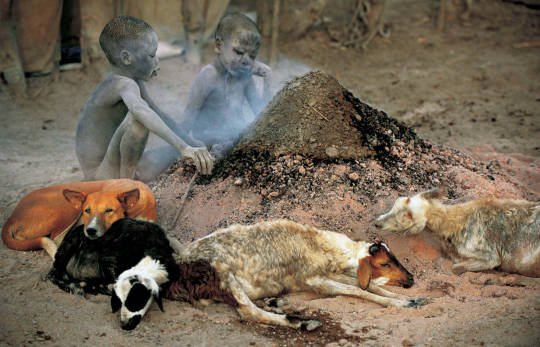
Dinka children by the fireside, South Sudan, 2013 - by Carol Beckwith (1945), American & Angela Fisher, Australian
96 notes
·
View notes
Text
African countries are being forced to spend billions of dollars a year coping with the effects of the climate crisis, which is diverting potential investment from schools and hospitals and threatens to drive countries into ever deeper poverty.
Dealing with extreme weather is costing close to 6% of GDP in Ethiopia alone, equating to a spend of more than $1 repairing climate damage for every $20 of national income, according to research by the thinktank Power Shift Africa.
The warning comes just before the major new scientific report from the global authority on climate science, the Intergovernmental Panel on Climate Change. This report, the second part of the IPCC’s comprehensive summary of global climate science, will set out the consequences of climate breakdown across the world, looking at the floods, droughts, heatwaves and storms that are affecting food systems, water supplies and infrastructure. As global temperatures have risen in recent decades, and as the impact of extreme weather has become more apparent around the world, efforts to make infrastructure and communities more resilient have largely stalled.
Africa will be one of the worst-hit regions, despite having done least to cause the climate crisis. According to the Power Shift Africa study, titled Adapt or Die: An analysis of African climate adaptation strategies, African countries will spend an average of 4% of GDP on adapting to climate breakdown.
These countries include some of the world’s poorest people, whose responsibility for greenhouse gas emissions is many times less than those of people in developed countries, or in large emerging economies such as China. Sierra Leone will have to spend $90m a year on adapting to the climate crisis, though its citizens are responsible for about 0.2 tonnes of carbon dioxide emissions a year each, while US citizens generate about 80 times more.
Mohamed Adow, director of Power Shift Africa, said: “This report shows the deep injustice of the climate emergency. Some of the poorest countries in the world are having to use scarce resources to adapt to a crisis not of their making. Despite only having tiny carbon footprints compared with those of the rich world, these African countries are suffering from droughts, storms and floods which are putting already stretched public finances under strain and limiting their ability to tackle other problems.”
He called for more funding from developed countries, which promised at the Cop26 UN climate summit to double the money available to help poor countries adapt to the climate crisis. Rich countries promised in 2009 to provide $100bn a year to help poor countries cut their greenhouse gas emissions and cope with the effects of climate breakdown. But so far they have fallen short of that target, and most of the funds that have been provided have gone to projects to cut emissions, such as windfarms and solar panels, rather than efforts to help countries adapt.
The study examined national adaptation plans submitted to the UN by seven African countries: Ethiopia, Kenya, Liberia, Sierra Leone, South Africa, South Sudan and Togo. South Sudan, which is the world’s second poorest country, was hit by floods last year that displaced 850,000 people, and led to outbreaks of water-borne diseases. The country is to spend $376m a year on adaptation, about 3.1% of its GDP.
Chukwumerije Okereke, director of the centre for climate change and development at the Alex Ekwueme Federal University in Nigeria, said rich countries must respond to the findings, and to the IPCC report.
“It is both irresponsible and immoral for those that are the chief cause of climate change to look on while Africa, which has contributed next to nothing to climate change, continues to bear a disproportionate share of the impact,” he said. “The time for warm words is long gone. We need urgent, scaled-up, long-term support from the world-leading climate polluters.”
— African countries spending billions to cope with climate crisis
#fiona harvey#current events#climate change#global warming#climate justice#economics#international relations#poverty#ethiopia#sierra leone#kenya#liberia#south africa#south sudan#togo#mohammed adow#chukwumerije okereke
951 notes
·
View notes
Text

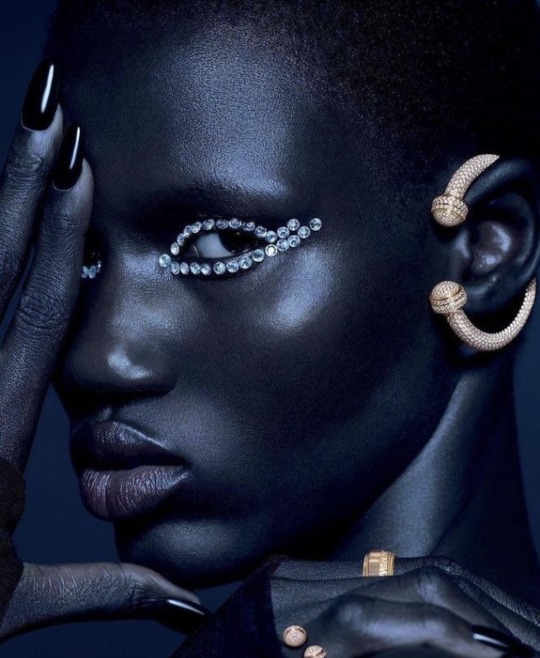

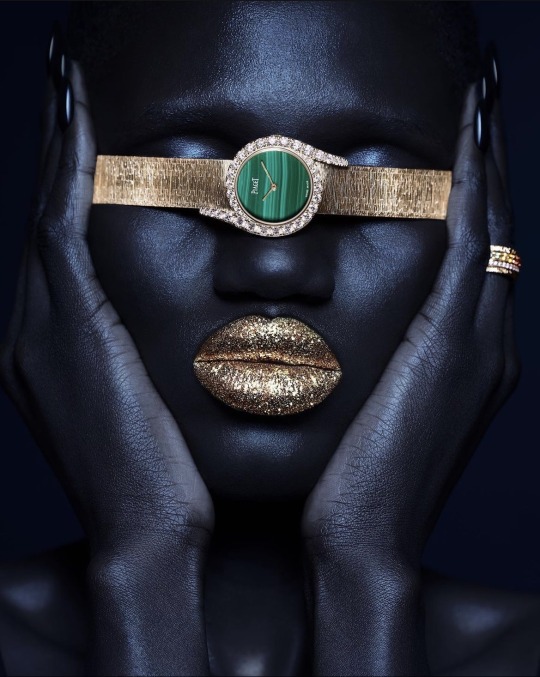

Eman Deng for Vogue Arabia wearing Piaget by Amer Mohamad
116 notes
·
View notes